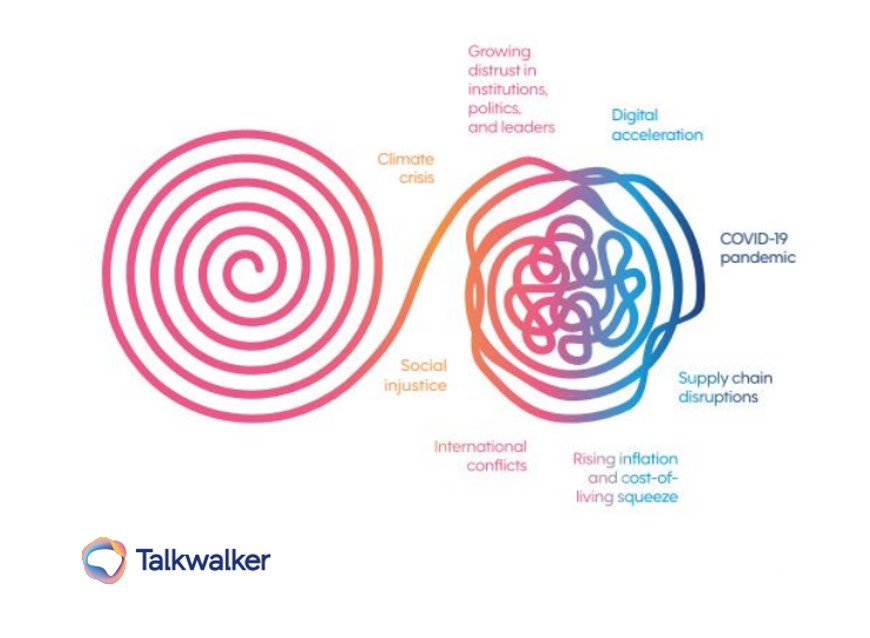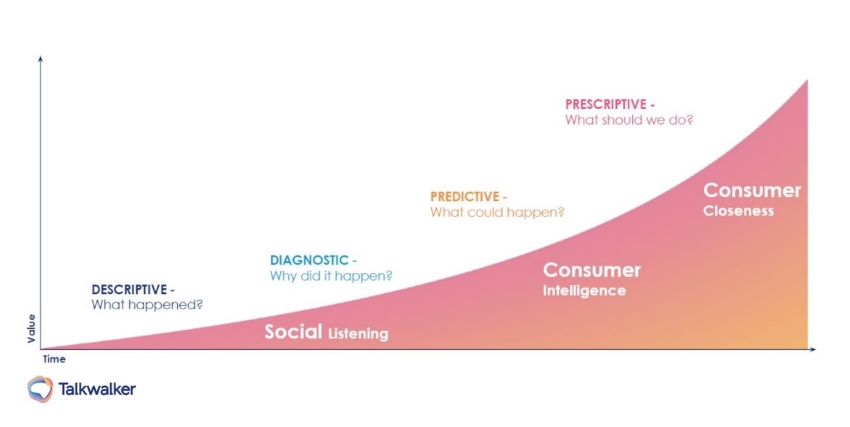Amid changing behaviours and expectations post-pandemic, Talkwalker’s Payal Chainani says the gap between customer and brand can be closed with real-time insights but it will take more than just data to achieve consumer closeness.
The consumer journey today is complex. The pressures of the COVID-19 pandemic, accelerated digital adoption, the ongoing climate crisis and other external forces have forced consumers to adapt more quickly than ever. This change in behaviours and expectations is widening the gap between brand and consumer – one that brands and marketers need to address urgently.
The consumer gap exists despite access to data
Everyone is looking for repeat customers and repeat buy-ins. But without a data-driven understanding of who their consumers are, this is becoming extremely challenging. This is especially so given how social media and digitisation have levelled the playing field for new players and increased the competition that brands are facing.
Data chaos, lack of speed and inadequate resources to analyse the data – these are just some of the struggles marketers face when handling the large amounts of data made available to them today. When we add to that the unpredictable future, it becomes even more of an uphill battle for marketers to use the data to understand their consumers and to get closer to them.

Visual representation of how the consumer journey has evolved, from being clear and predictable, to being complex and unexpected
Data alone gives you signals and connecting those signals leads to insights. For brands navigating today’s complex consumer journey, increased speed and depth of insight are needed in order to maintain relevance and build a competitive advantage. In order to plug the brand-consumer gap, a few critical elements have to be in place.
Data, tech and people model so brand resonates with consumers
When looking at the brands that are winning despite the challenges in today’s business climate, we see that they have a concrete data, technology and people model in place. Aligning data, technology and people is not a new model. But how well you connect the three is what determines whether a brand wins or loses.

Consumer closeness is an ongoing journey
Many brands struggle to keep up with what to measure and how. More often than not, teams are still working in silos in order to try to bridge the brand-consumer gap – product teams commission industry research, customer teams run customer satisfaction surveys, marketers implement social listening programs and so on.
Break the silos: In Talkwalker’s Asia Pacific survey in 2021, 47% of PR, marketing and consumer insights respondents confirmed that access to insights from consumer conversations is limited to a specific department within their organisation.
More innovative tools and unified approaches are needed to help businesses integrate consumer insights into every aspect of their work, from the design of their products and supply chains, to their go-to-market practices.
With loved brands growing three times faster than the industry average, achieving a price premium and generating three times more word-of-mouth recommendations, it’s clear that achieving consumer closeness is critical for the bottom line and teams across the business can better align on this target when they share a single source of truth.
Consumer-centricity: Start with the voice of the customer to end with brand success.
While it is crucial to have the right sources of data in place and the technology to implement the necessary measurements, it is the people that finally enable a consumer-centric culture to thrive. More can be done to encourage experimentation with metrics and analytics, so that brands are able to keep up with the customers as they adapt to the fast-changing digital landscape.
Shape tomorrow: With the data that is available, most teams are focused on describing what happened or why it happened.
But everybody already does that and they’re pretty good at it. With predictive and prescriptive analytics, however, you can now go further with understanding what could happen and also what you should do as a brand in those scenarios. This transformation from descriptive to predictive and prescriptive analytics is what we’ve seen successful brands put in place and takes the form of trend analysis and forecasting practices in some cases. This foresight helps brands become future-ready and stay ahead of their competitors.

Shopee’s consumer engagement
Take Shopee for example. The leading e-commerce platform in Southeast Asia and Taiwan adopts a hyperlocal approach to consumer engagement to ensure that users in all its markets
enjoy relevant and personalised shopping experiences.
To achieve this level of consumer closeness, Shopee leverages social data on Talkwalker dashboards to monitor organic conversations around the brand across all social media. When the Shopee team found that Southeast Asian shoppers were growing accustomed to year-end mega sales, they leveraged real-time insights from the Talkwalker platform to identify and reward top Shopee fans and even casual shoppers who were sharing their positive experiences on social media. This helped the brand to re-introduce an element of surprise and delight to festival sales, as well as renew love for the Shopee brand experience.
The Shopee team also uses social listening to identify conversations around its in-app games, gather feedback on which games users enjoyed the most and the technical issues they faced in order to further optimise their in-app games and features.
Conclusion
The great news with all of this is that every brand has the potential to become consumer close. Answers for your brand are waiting to be uncovered. To find them, brands need to understand where these important consumer insights are, get the right tech stack in order, leverage the right listening tools and don’t forget to empower your people and culture.
People make your business in the same way your consumers make your business. No one specific department owns the consumer journey in 2022. Not marketing, not product, not IT, not support, not even customer experience – it’s everyone. Give them the right tools for them to do their job the best way possible. And break those barriers across all the departments. Don’t work in silos. When data, technology and people across the organisation are aligned on a common goal, the consumer closeness journey simply makes more sense.

